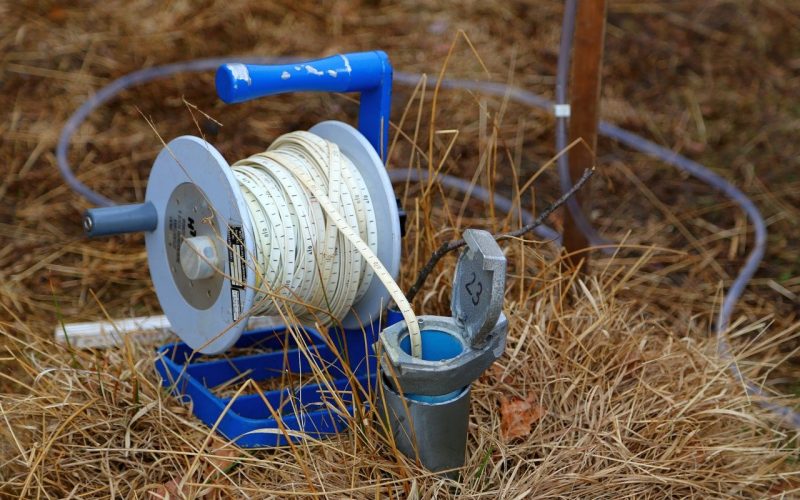Groundwater is one of our main drinkable water sources. Many sectors of society rely on this technology as their only means for daily water supply. By analyzing the fact that 23% of the world’s freshwater comes from the subsoil, it’s easy to understand the importance of this resource in the modern world. Although aquifers have a wide extension and can be replenished, large demands have turned them into a finite natural resource.
Groundwater: formation, movements, and accessibility
The United Nations has reported that there are 10 million cubic kilometers of underground water across the world. While groundwater constitutes only 1.7% of the planet’s water resources, it represents 30% of drinkable water. For this reason, many see a possibility to support sustainability through underwater extraction. But this task presents many challenges. One of the main ones is the capability to refill the water faster than it’s removed.
A variety of factors conditions the groundwater movements:
- The soil
- The aquifer
- Rock layers
- Permeability
- Porosity
The subterranean water sources are formed by rain. Precipitations may fall on the ocean, rivers, lakes, i.e., surface water, or on the soil. Thus, some of the raindrops evaporate while others percolate and sink into the subsurface through the Earth’s porosity, crevices, and cracks. The liquid travels until it finds layers of solid impermeable rock and is collected in underground ‘pools’ called aquifers.
This process has been repeated for many years, creating large extensions of water storages below the Earth’s surface. Although it may seem unlikely, groundwater does not remain still. It moves according to the above-mentioned factors.
The velocity depends on the soil’s permeability and the resistance the liquid finds when it moves. Also, it depends on the amount of space that exists between the sub-surface’s materials. This quality is called ‘porosity’.
Water can exist for centuries in the deepest ground layers without accessing the surface.
Types of aquifers
There are two main types of aquifers: confined and unconfined.
Unconfined aquifer: These aquifers are in contact with the atmosphere through a layer of porous soil. The first water layer is called the ‘water table’, and its depth depends on the geographical conditions.
These aquifers are nourished by precipitations or streams. The water infiltrates through the soil forming an underground reservoir. This water is accessed only through pumping.
Confined aquifer: This is water trapped in a soil ‘sandwich’. In other words, it’s confined between two layers of solid impermeable rock. Thanks to the force of gravity, the liquid travels from the surface through an inclined plane, creating a high level of pressure. This pressure is usually enough to push the water back up; like in the case of a well. The water extracted from this method is called ‘Artesian water’. Please see a detailed explanation of confined and unconfined aquifers in the video below.
What is groundwater used for?
Groundwater is a very important natural resource. In 2005, groundwater accounted for 20% of the total world extraction. Also, 23% of freshwater was withdrawn from the subsoil. Although this water can contain saline elements, this accounted for only 4% of the total groundwater extraction in 2005. If we do the math, we can see that over 95% of the water withdrawn from underground is drinkable.
While extraction is expensive, it remains vital for dry zones with minimum access to surface water. The expenses and energy costs are worth it when it comes to meeting a town’s daily water needs. Since the 50s, groundwater has contributed steadily to the water supply. And, although the population increased significantly, this technology remained stable, even showing a slight decrease by 13% since 2005 and towards 2010.
But public supply is not the only use society gives to subsoil water reserves. 65% of withdrawals are used for irrigation, while only 19% is used for town supplies, especially drinking water. Other uses present a much smaller percentage. These include agriculture, domestic and industrial use, mining, and thermoelectric.
Let’s not forget that, for a large sector, groundwater is the only access to drinkable water. They use wells to provide water for their daily needs, thus being a vital life source. 99% of self-supplied water comes from underground sources.
On the other hand, the thermoelectric use of water comes mainly from surface sources. It’s mostly used for cooling equipment and driving turbines.
Interesting facts
- Global groundwater’s volume is equivalent to a 3-meter-deep body of water spread over the continents.
- This is the most extracted raw material in the world. Approximately 982 cubic kilometers of water are withdrawn every year.
- Groundwater provides nearly 50% of the world’s drinkable water.
- There are 0.1 to 5.0 million cubic kilometers in the upper 2km of the continental crust that are considered to be “modern”. This means they were recently replenished. These 2 kilometers don’t include the high latitude of continents like America or Asia.
- Around 38% of irrigated lands worldwide have groundwater equipment in place.
- Nearly 70% of extracted groundwater is used in agriculture.
A conclusion on groundwater usage
Undoubtedly, this resource constitutes a major water supply not only for industries but also for people. Groundwater withdrawal supports and meets the daily needs of many cities. Especially those located in areas where surface water is difficult to access.
With the increasing population and environmental crisis, subterranean aquifers can make a difference when it comes to life support and sustainability.
Yet, some issues remain to be solved, like costs, ground pollution, and fast-paced replenishment.

